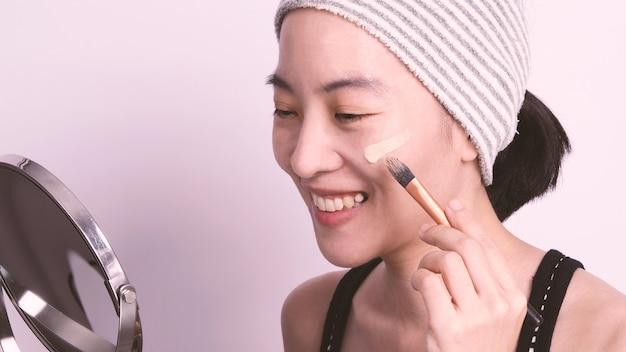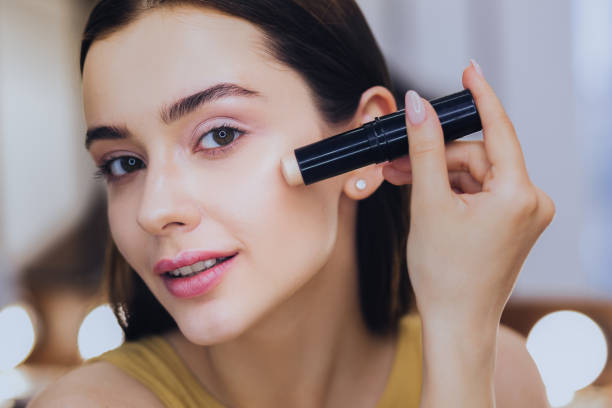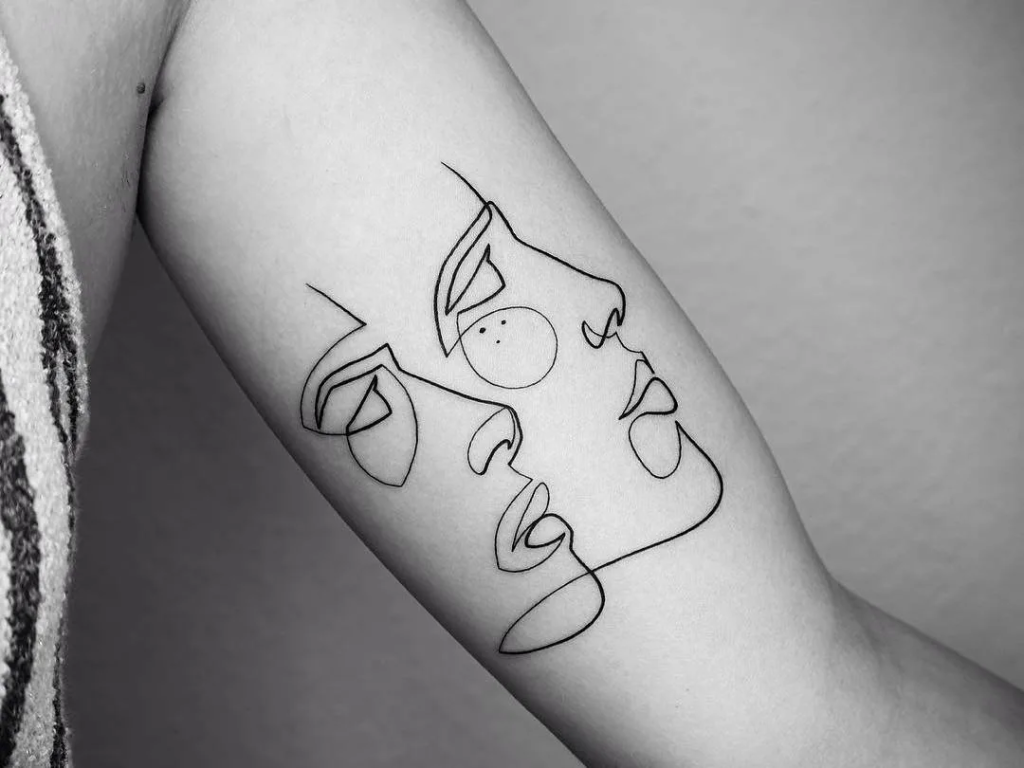Entering the world of makeup can be overwhelming, especially when it comes to the cornerstone of any great look – a smooth and even base. This article will demystify the process of applying foundation and concealer for those new to makeup. By understanding product selection and mastering the application techniques, beginners can achieve a flawless complexion that sets the stage for further beauty exploration. From prepping your skin to setting your makeup, we’ll walk through each step, ensuring you’re equipped to create a perfect foundation and concealer routine.
Understanding the Purpose of Foundation and Concealer

Foundation serves as the canvas for your makeup artistry. Its primary role is to even out your skin tone, creating a uniform surface for further makeup application. Concealer, meanwhile, works to camouflage imperfections such as dark circles, blemishes, and redness. It complements the foundation by providing targeted coverage where needed. Together, these two products help in creating a seamless and radiant complexion that can boost confidence and highlight your natural beauty.
Choosing the Right Products for Your Skin

It’s critical to pick makeup that harmonizes with your skin to prevent irritation and achieve the best results. The first step is knowing your skin type—be it oily, dry, combination, or sensitive. This knowledge will guide you in selecting a foundation formula that complements your skin’s needs, from hydrating liquids to oil-free powders. Equally important is choosing the correct shades; this will help avoid the dreaded mask-like appearance and ensure a natural transition from your face to your neck.
Before diving into the numbered lists, let’s explore how to identify your skin type:
- Dry Skin – You may feel tightness in your skin and notice flakiness. Opt for hydrating, creamy foundations.
- Oily Skin – Your skin often looks shiny, and you may have visible pores. Look for matte, oil-free formulas.
- Combination Skin – You experience both oily and dry areas. Consider a balancing foundation tailored for combination skin.
- Sensitive Skin – You tend to react to certain ingredients. Search for hypoallergenic and fragrance-free options.
Step-by-Step Guide to Applying Foundation Like a Pro
Begin with a clean canvas; cleanse, tone, and moisturize your face. This preps your skin for makeup and can improve both the application and longevity of the products. Many people overlook the step of applying primer, but it can fill in pores and fine lines, creating a smoother surface. When applying foundation, you have a choice of tools—brushes, sponges, or your fingertips. Each has its own benefits, and the choice comes down to personal preference and the type of foundation you’re using.
The application can be easy with these steps:
- Prime Your Face – Apply a pea-size amount of primer to create a silky base.
- Dot and Blend – Dot foundation on your cheeks, forehead, chin, and nose, blending outward with your chosen tool.
- Ensure Even Coverage – Make sure there are no visible lines at the jawline or hairline.
- Layer if Needed – Add extra coverage where needed by carefully layering thin amounts of foundation.
Concealer Tips and Tricks for a Radiant Look
The key to using concealer effectively is to apply it only where needed and blend, blend, blend. Choose a concealer that’s one to two shades lighter than your foundation for under-eye areas or exact-match shading for spot concealment. To prevent creasing, avoid applying too much product and set it with a light dusting of powder.
For those with color-specific concerns, a table of color-correcting concealers can be a useful guide:
| Color Concern | Concealer Hue | Usage |
|---|---|---|
| Redness | Green | Neutralizes red tones from blemishes or rosacea |
| Dark Circles | Peach/Salmon | Counteracts blue or gray tones under the eyes |
| Sallowness | Lavender | Balances out yellow tones for a brighter complexion |
Setting Your Foundation and Concealer
To ensure your foundation and concealer stay in place throughout the day, it’s essential to set them with powder or a setting spray. This step also helps to reduce shine and provides a more matte finish. When choosing a setting product, consider your skin type once again—for instance, hydrating sprays for dry skin or translucent powder for oily skin. Apply setting powder with a fluffy brush, using a pressing and rolling motion to avoid disturbing the makeup underneath.
Common Foundation and Concealer Mistakes to Avoid
Achieving a flawless makeup look starts with the basics of proper foundation and concealer application. Avoiding common mistakes can make a significant difference in how your makeup looks and lasts throughout the day. Here are some key mistakes to avoid:
- Wrong Shade: Using a foundation or concealer that doesn’t match your skin tone can lead to an uneven, unnatural look. Always test products on your jawline in natural light before purchasing.
- Poor Blending: Failing to blend your foundation and concealer thoroughly can result in noticeable lines or patches. Use the right tools, like a beauty sponge or a stippling brush, to blend seamlessly.
- Too Much Product: Applying too much product can make your makeup look cakey and accentuate fine lines and wrinkles. Start with a small amount and build up as needed.
- Ignoring Skin Type: Using products that aren’t suited for your skin type (oily, dry, combination) can compromise the finish and longevity of your makeup. Choose formulations that complement your skin’s needs.
- Skipping Primer: Not using a primer can affect the application and endurance of your foundation and concealer. A good primer can smooth out the skin surface and help makeup adhere better and last longer.
Conclusion
Beginning your journey with foundation and concealer doesn’t need to be intimidating. By selecting the right products for your skin type, perfecting your application technique, and taking care to set your makeup, you can achieve a flawless and natural base. This will serve as the ideal starting point for any makeup look you wish to create. With a bit of practice, you’ll gain the confidence to experiment with more bold and creative makeup styles in no time.
FAQs for Foundation and Concealer Application
Q1: What type of foundation is best for beginners?
A1: For beginners, a lightweight liquid foundation is often the easiest to manage. It blends well and can be built up from sheer to medium coverage, depending on your preference.
Q2: Do I need to use a primer before foundation?
A2: While not absolutely necessary, using a primer can help to create a smoother base, reduce the appearance of pores, and help your foundation last longer throughout the day.
Q3: How do I find the right shade of foundation and concealer?
A3: The best way to find your shade is to swatch a few options on your jawline and check them in natural light—the shade that disappears is your match. For concealer, choose one that is one to two shades lighter than your foundation for highlighting or the exact match for covering blemishes.
Q4: How do I apply concealer to avoid caking?
A4: Apply concealer in thin layers and blend well with a sponge or fingertip. Set it with a light dusting of translucent powder to avoid caking and creasing.
Q5: Can I use concealer without foundation?
A5: Absolutely. If you prefer a more natural look or have minimal areas to cover, you can use concealer on its own. Just make sure to blend it well into your skin.



